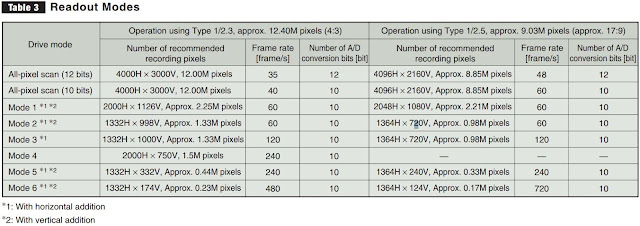International Display Workshops combined with Asia Display 2012 to be held in Kyoto, Japan on December 4-7, has few image sensor presentations. For the first time Panasonic openly presents its SmartFSI technology:
Evolution of Eyes and Image SensorsH. Watanabe
Panasonic, Japan
The evolution of the eye and image sensors was overviewed. The possible disadvantage of the inverted structures of human eyes and FSI image sensors was solved with the use of the lightpipe function. A novel “SmartFSI” image sensor with stacked lightpipe structure demonstrated a high performance.There are quite a few other interesting presentations, including 3 by Samsung:
A 1.5 Mpixel RGBZ CMOS Image Sensor for User Interface and 3D Image CaptureW. Kim, J. Yun, S.-H. Lee, Y. Wang, I. Ovsiannikov, Y. Park, C. Chung
Samsung, Korea, USA
A 1.5 Mpixel RGBZ image sensor to capture color (RGB) and depth (Z) at the same time is presented. Time-Of-Flight (TOF) method is used for depth. Color pixels and depth pixels are placed together in pixel array with specially designed RGBZ pattern. It demonstrates excellent depth performance and full color image.A Full-HD CMOS Image Sensor with TimeMultiplexed 2D/3D Image AcquisitionS.-J. Kim, J. Shin, J. D. K. Kim, B. Kang, K. Lee
Samsung Advanced Inst. of Tech., Korea
We present a 1920x1080 pixel array to provide high-resolution 2D color images and high-accuracy 3D depth maps in a time-multiplexed manner. The prototype chip demonstrates the demodulation of 20 MHz time-of-flight signal with the contrast of 52.8%, achieving less than 38 mm depth error between the distance of 0.75 m and 4.5 m. [For a good multi-purpose gesture recognition one needs less than 10mm accuracy - ISW]
Amorphous Oxide Semiconductor Thin Film Transistor for Novel Device ApplicationsS. Jeon, I. Song, S.-E. Ahn, C. I. Kim, U.-I. Chung
Samsung Advanced Inst. of Tech., Samsung Elect., Korea
Among various semiconductor devices, electronically active oxide thin film transistors (TFTs) have received considerable attention for a wide range of device applications. In this presentation, we review various device applications utilizing amorphous oxide semiconductor TFT, which include photo-sensor, image sensor and other device applications.Low Noise Readout Circuits Interface Using a Capacitive-Feedback Frontend Amplifier for High Output Impedance SensorsK. Mars, S. Kawahito
Shizuoka Univ., Japan
In this paper a low-noise high-gain readout circuit interface for high output impedance sensors is presented. Theoretical noise analysis and simulation results shows that by using a high-gain switched capacitor amplifier, the thermal noise is greatly reduced if the dominant reset noise component at the charge summing node is canceled.An Ultra-Low Voltage CMOS Imager with Novel Pulse-Width-Modulation ReadoutC.-C. Hsieh, M.-T. Chung
Nat. Tsing Hua Univ., Taiwan
A 0.5 V PWM CMOS Imager chip with threshold variation cancelling and programmable threshold control scheme was implemented. It achieves 0.055% pixel FPN, 0.65 LSBrms random noise at dark, and 82 dB dynamic range at 11.8 fps. The chip consumes 4.95 µW at 11.8 fps; results in a iFOM as 163.9 pW/f-p.Discussing Pixel Circuits for Hybrid Sensor and Display Pixel ArraysN. Papadopoulos, M. Yang, M. Esmaeili-Rad, M. Sachdev, W. S. Wong
Univ. of Waterloo, Canada
The hybrid sensor and display pixel proposed consists of: light sensor and integrated display onto the backplane. Phototransistors incorporating both sensing and switching on the same device was used. The backplane was implemented using a driving TFT and an OLED. The grey scale is generated by pulse-height and width voltage modulation.
















